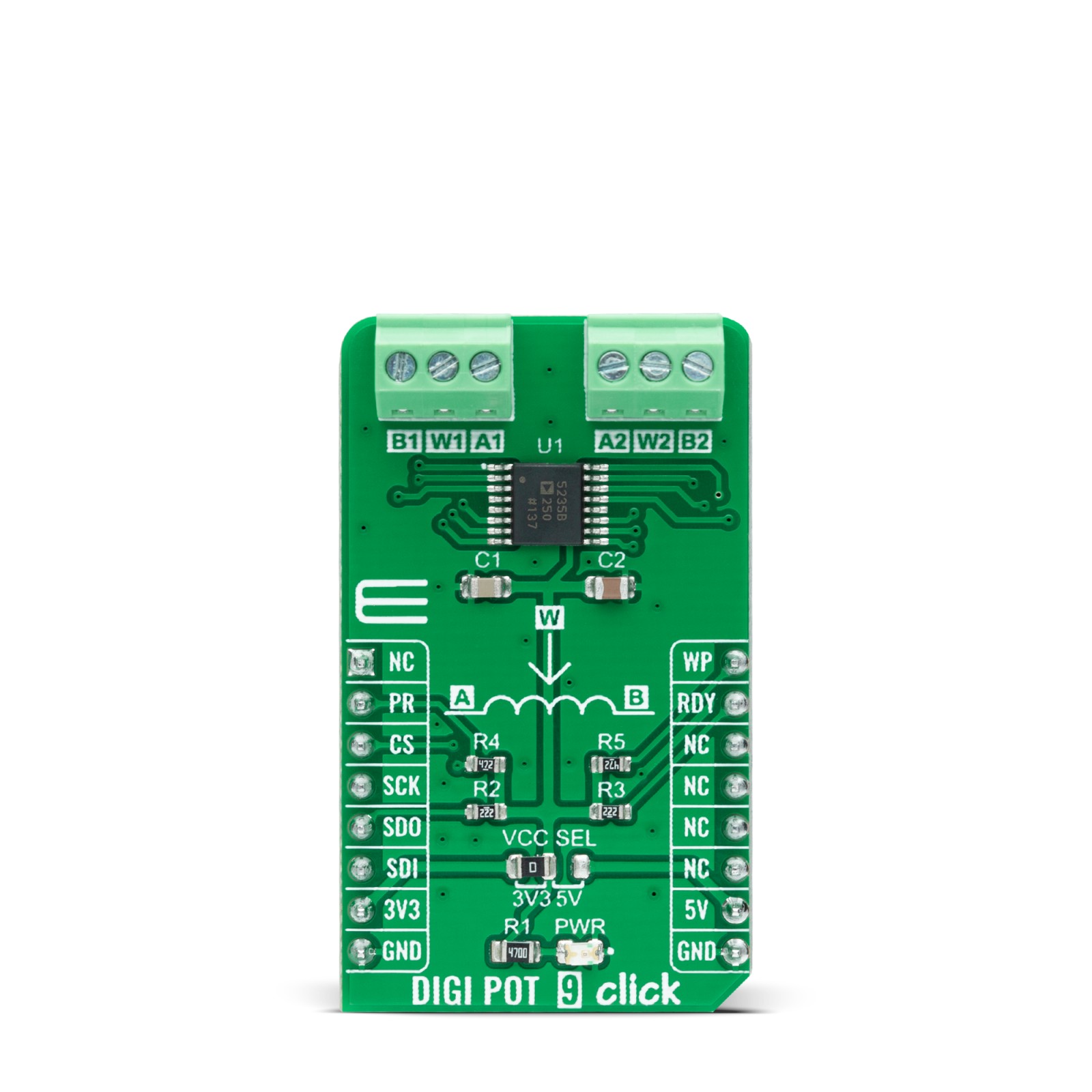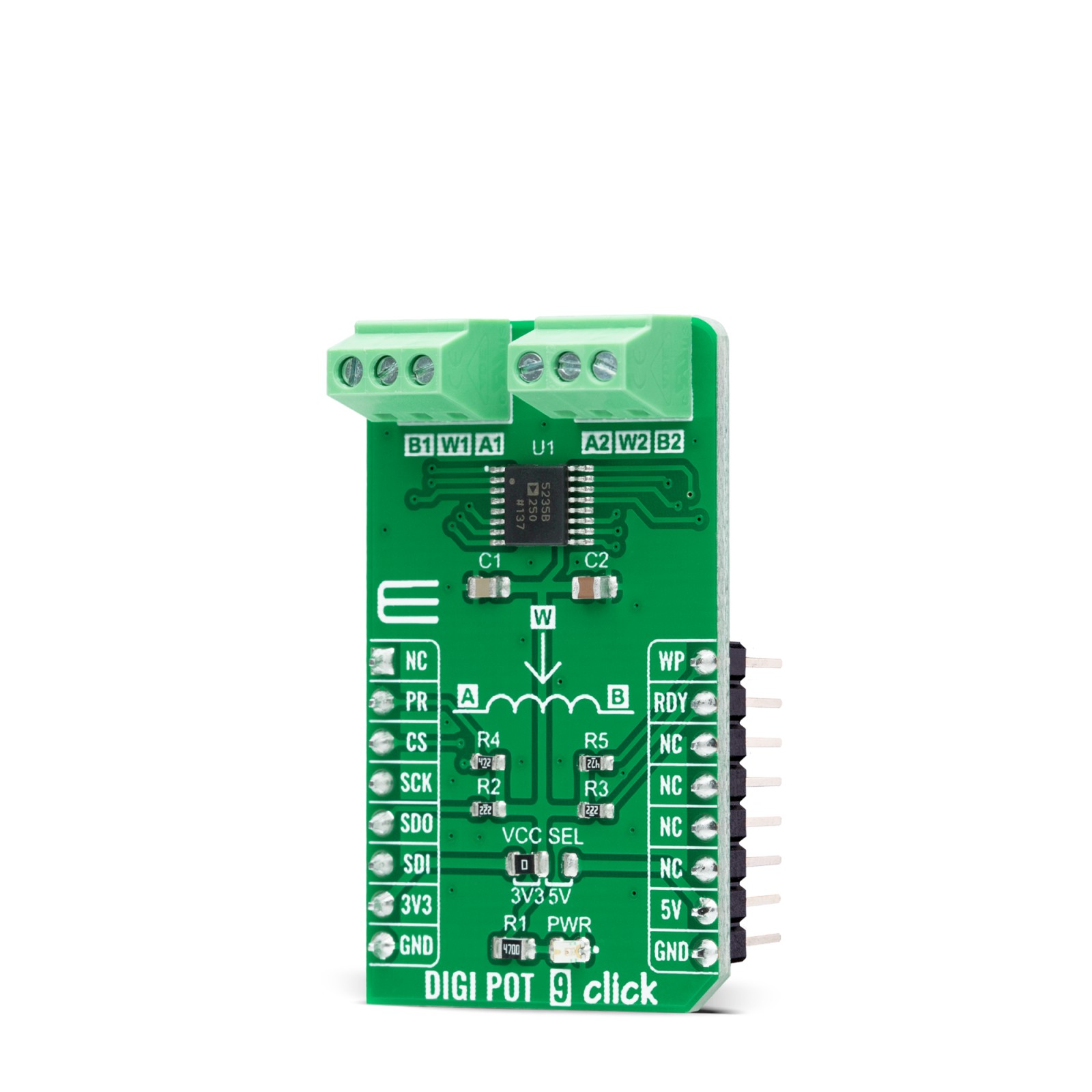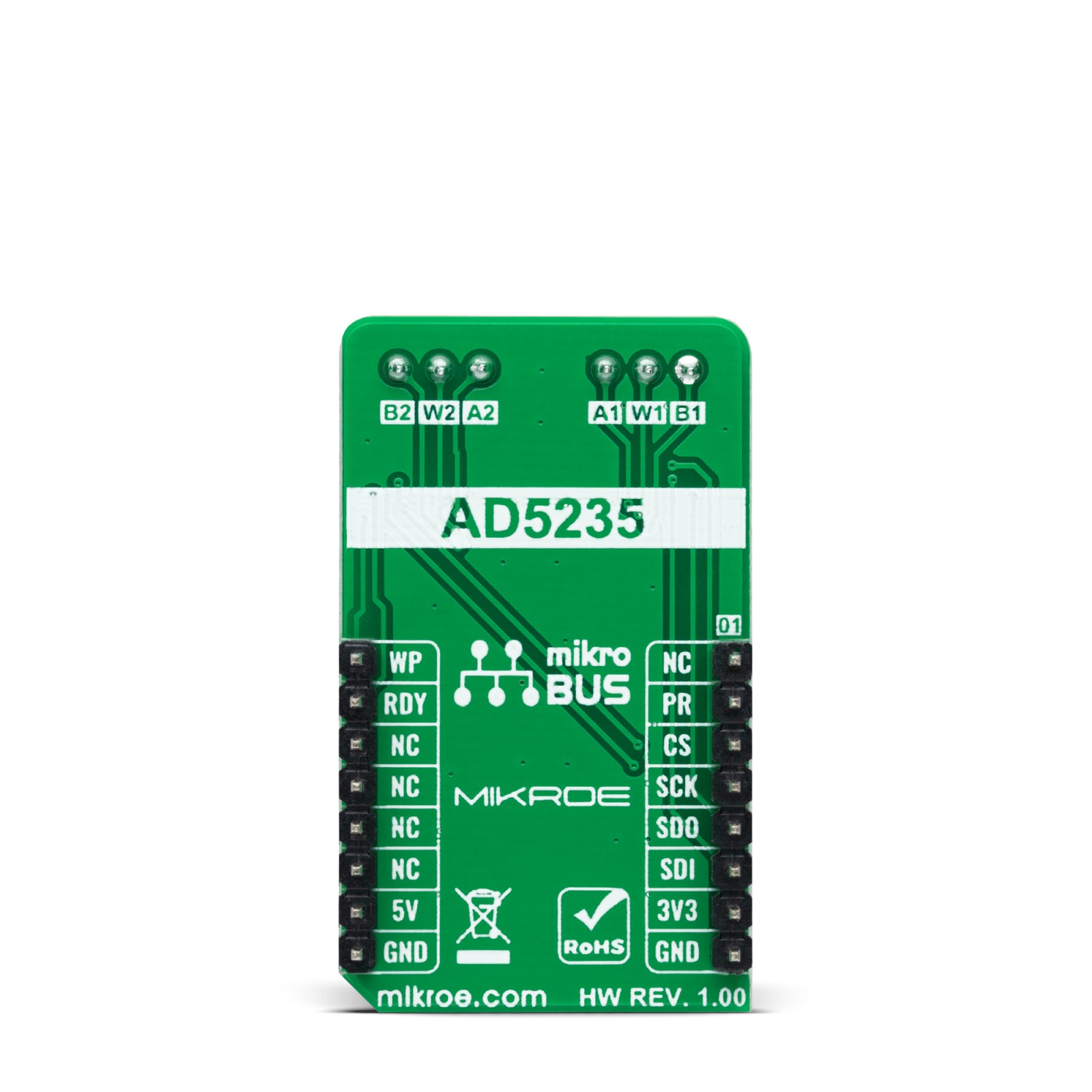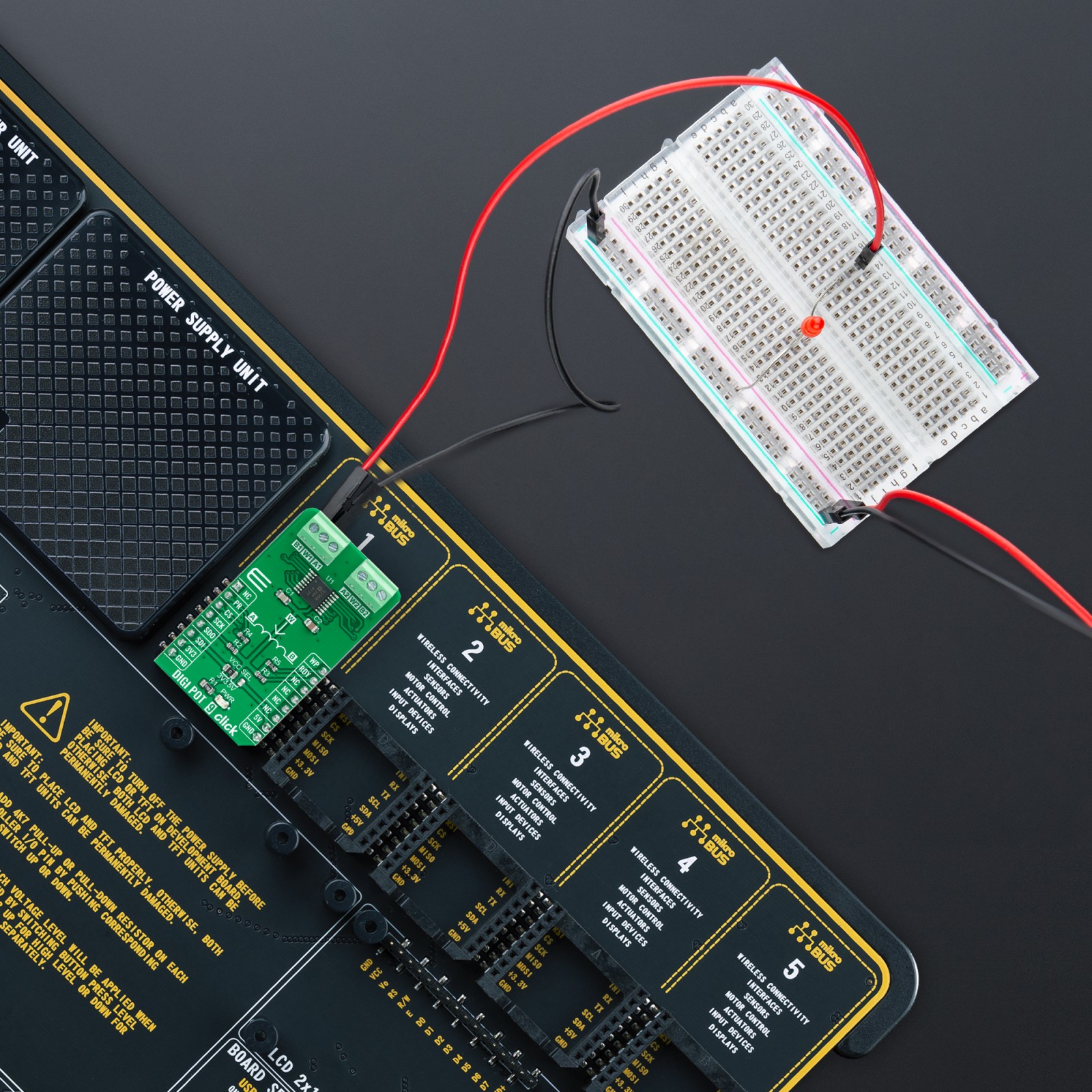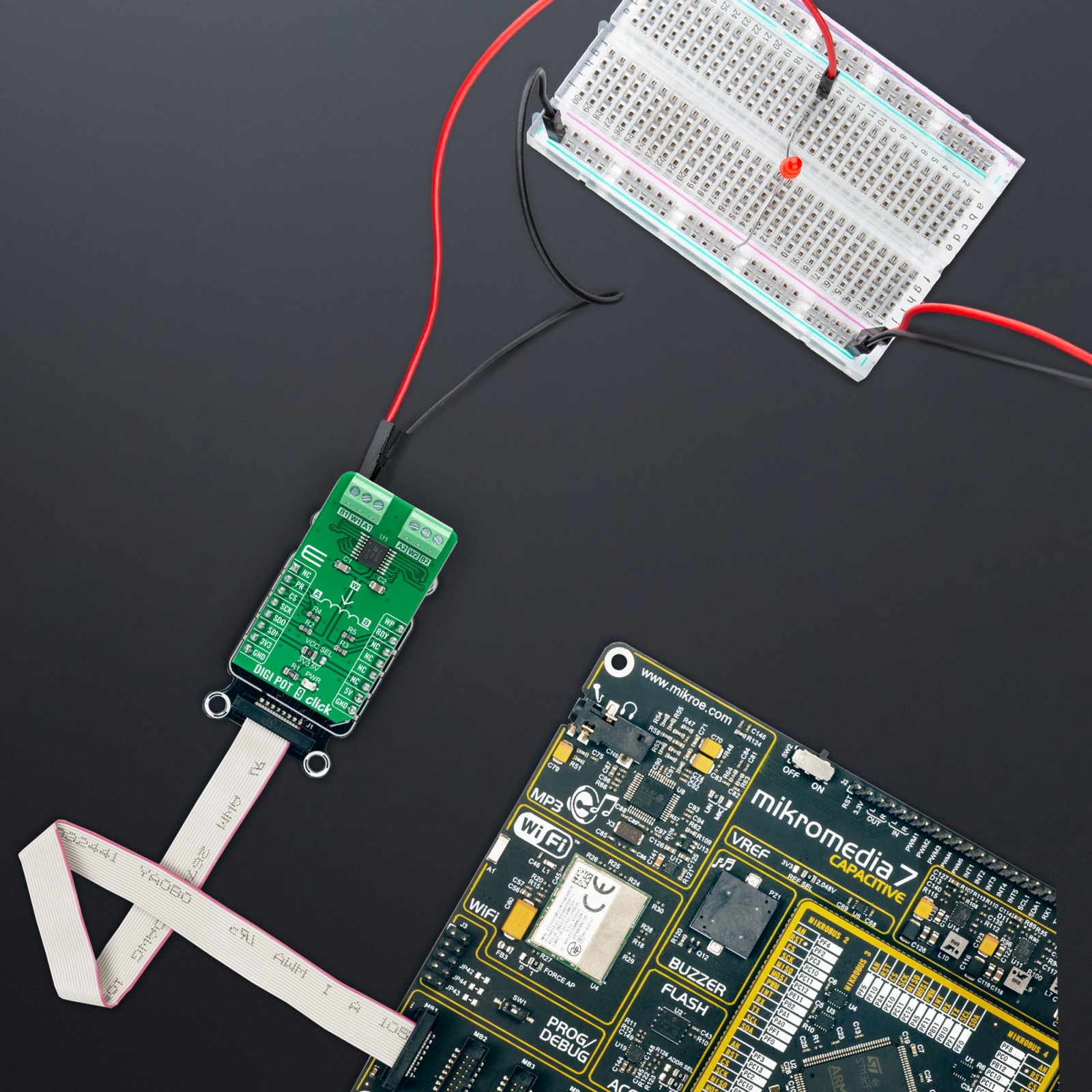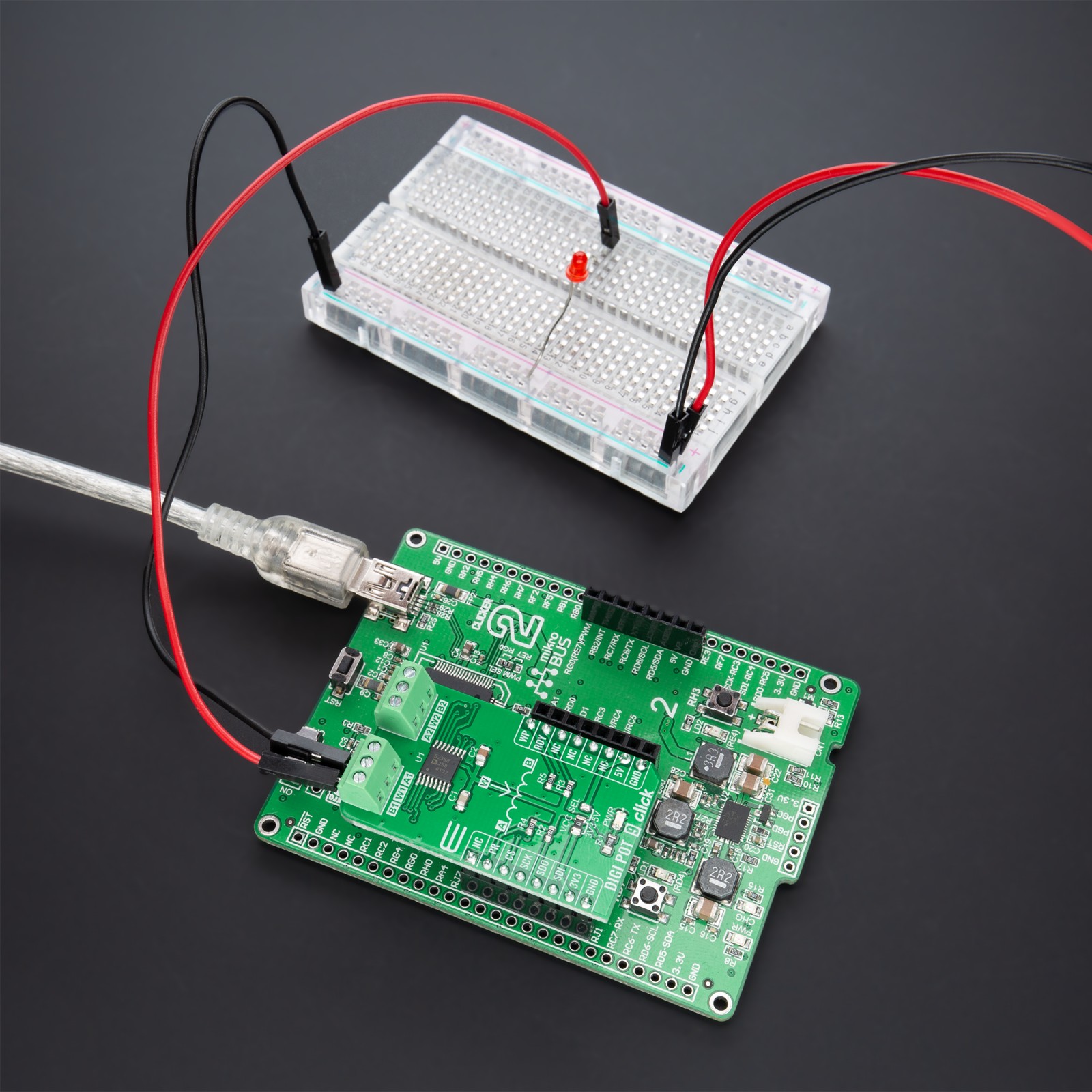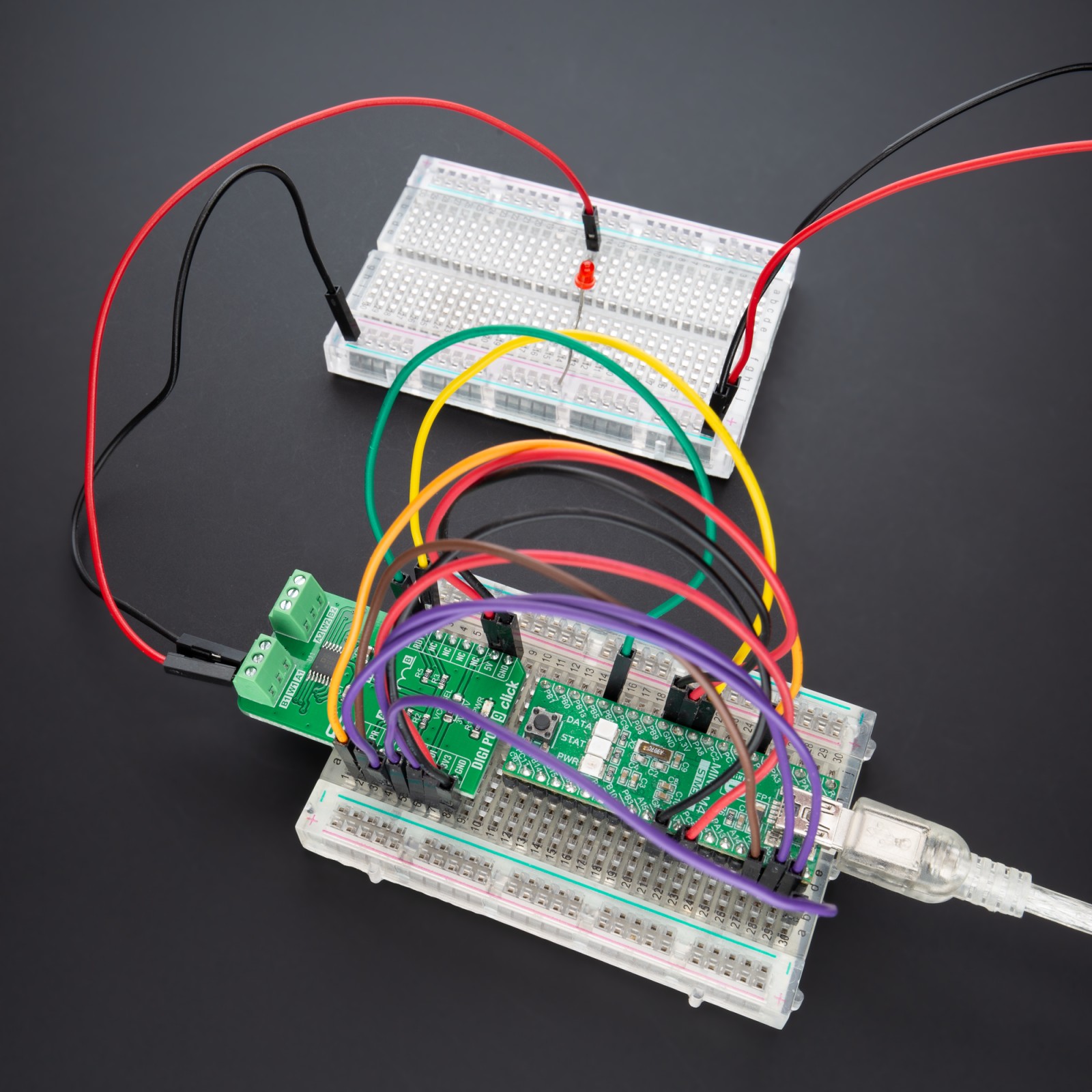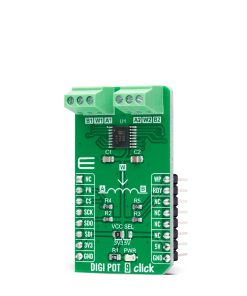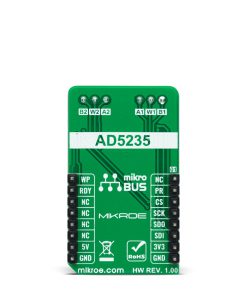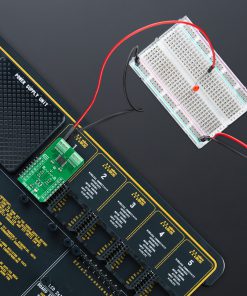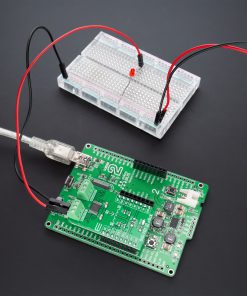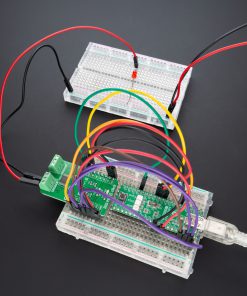Subtotal: R2,475.00
DIGI POT 9 Click
R800.00 ex. VAT
DIGI POT 9 Click is a compact add-on board used as a digitally controlled potentiometer. This board features the AD5235, a dual-channel, nonvolatile memory, digitally controlled potentiometer from Analog Devices. The AD5235’s versatile programming via an SPI-compatible serial interface allows multiple modes of operation and adjustment. The resistor wiper position is determined by the RDAC register contents, which act as a scratchpad register, allowing unlimited changes of resistance settings. The nominal resistance of the RDAC between terminal A and terminal B (RAB) is 250 kΩ with 1024 positions (10-bit resolution). This Click board™ can be used as mechanical potentiometer replacements, voltage-to-current conversions, gain and offset adjustment, and many other applications.
DIGI POT 9 Click is supported by a mikroSDK compliant library, which includes functions that simplify software development. This Click board™ comes as a fully tested product, ready to be used on a system equipped with the mikroBUS™ socket.
Stock: Lead-time applicable.
| 5+ | R760.00 |
| 10+ | R720.00 |
| 15+ | R680.00 |
| 20+ | R654.40 |

 GSM/GNSS Click
GSM/GNSS Click  RS485 Click 5V
RS485 Click 5V  ADC Click
ADC Click 